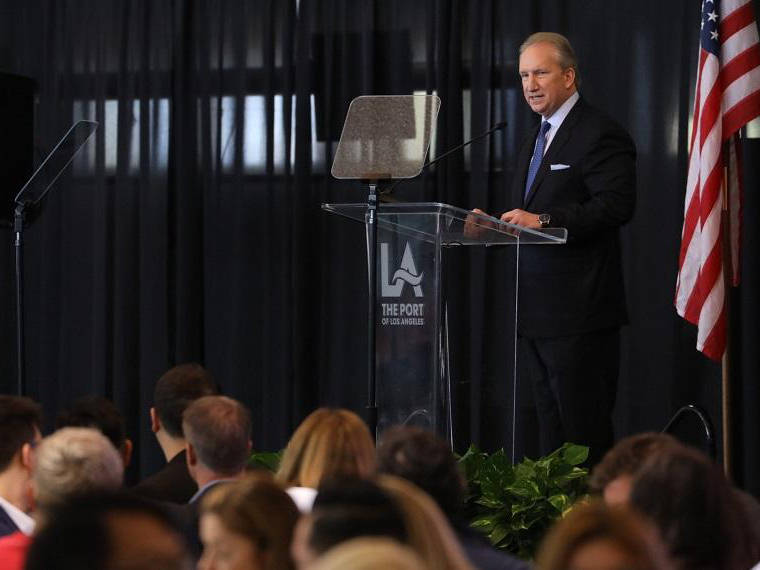The Port of Los Angeles reported an 18% jump in January volume compared to the same period in 2023, according to Eugene Seroka, Executive Director, Port of Los Angeles.
Seroka also noted that some shippers are rerouting cargoes to Los Angeles and West Coast ports as a result of challenges accessing the Suez and Panama canals.

- As a result of the challenges impacting the Suez and Panama canals: “The impact has been limited …(but) that could change as shippers weigh a host of factors in those regions. But the bottom line is this, LA can handle additional cargo. If there is a need or desire to reroute in this direction, we stand ready to help American importers and exporters to keep our economy going.
- But recently, as I've traveled overseas, shippers are beginning to tell me that they're starting to reroute cargo over the West Coast of the United States and avoid these hotspots. Basically because of the uncertainty. It's not a deluge of freight, but we do see a little bit of an uptick because of these changes.
- The Port reported, “January volume, reaching an impressive 855,020 TEUs. This marks our second best January on record…finishing 18% higher than the previous year.” The January volume imports came in at “about 442,000 container units, a significant 19% increase over last year.”
- Moving over to exports, “we processed more than 126,000 TEUs in January, which is a 23% increase over last year. That marks the eighth consecutive month of year-on-year export growth, A welcome rebound after more than two years of very low export volume.”
- For the first quarter of 2024, the Port of Los Angeles projects” a 20% increase to about 2.2 million TEUs over Q1 last year.”
- In terms of trade with South and Central America, Seroka said: “We want to do more business in Central and South America. The power of proximity is so strong. About 3% of our freight in the portfolio here at the Port of Los Angeles comes from the West Coast of South America seasonally, usually in the wintertime on perishable commodities, such as fruits and vegetables, and other agricultural products. The Transpacific market continues to be our main source of imports and exports, but with continued investment and friendly trade relations, I see us growing in this marketplace.”
- Overall Seroka is optimistic about 2024 and said that “with a six-year labor deal in place between our dock workers, the ILWU, and the Pacific Maritime Association on the West Coast, confidence in our gateway's ability to deliver is strong. Since the labor deal was ratified last August, our Asia import market share is up to 46%. That's a four percentage point jump for the San Pedro Bay ports during that time.”
Seroka’s guest at the media briefing was California Lieutenant Governor Eleni Kounalakis, who highlighted the need for infrastructure and sustainability investments in California’s ports and freight system: “California’s historic investments in our state’s supply chain infrastructure are designed to make our ports more competitive and sustainable … With updates in infrastructure, digitalization, and zero-emission projects at the Port of Los Angeles, California’s supply chains are moving goods efficiently, accelerating the decarbonization of the state freight sector, all while creating high-quality jobs.”
Kounalakis also emphasized her commitment to offshore wind: “So several years ago, I had the opportunity to co-sponsor the legislation to get the ball rolling in offshore wind. This is a massive undertaking, but we have a goal of five gigawatts of floating offshore wind off of our coast by the end of the decade and the construction of everything from the barges to the components themselves to the process of bringing these components out to sea, to putting them in place …It is a very bold goal. And I'm very focused on making sure that the State is doing everything we can to leverage our strength with the private sector to move this goal forward.”

